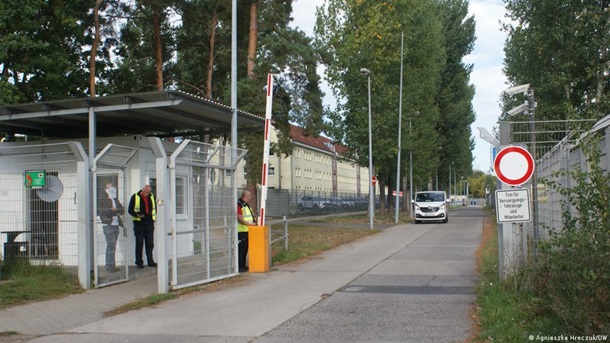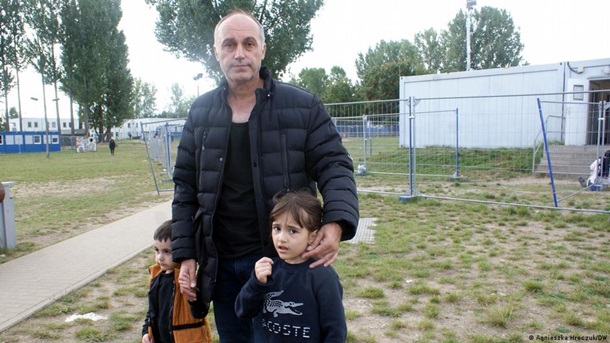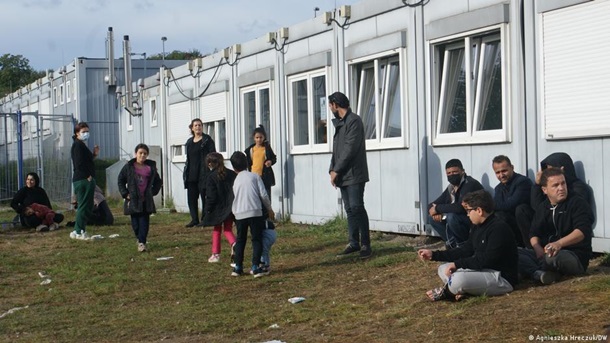The number of migrants who entered Germany illegally via the Belarusian route is growing. In Brandenburg, where the majority cross the border, the crisis is expected to worsen. Report from the refugee camp.
Hovek is happy: a few days ago he found shelter in a refugee camp in Brandenburg Eisenhüttenstadt. He has a roof over his head, a warm bed and food. Nobody yells at him, nobody drives him. Not the same as in Poland and Belarus, says the 29-year-old hairdresser from Syria. “The Belarusians threatened us with weapons and ordered us to go to Poland.
The Poles blocked the road and shouted “Come back to Belarus!” So we went back and forth, – he says in English. He and other migrants were afraid to die. – We had no food, it was cold and damp. We saw wolves. “They drank water from the leaves of plants or from a muddy stream. And so for eight days.
At some point, the migrants got lost and lost sight of each other. Hovek managed to find his way. As a result, he ended up in Poland. After walking several kilometers from the border, he found a driver who agreed to take him to Frankfurt an der Oder for $ 2,500. There he was found by German police and taken to a refugee camp in Eisenhüttenstadt.
The number of refugees along the Belarusian route in Germany is growing
In recent weeks, the number of foreigners who illegally entered Germany through Belarus and Poland, like Hovek, has been growing. Most cross the border in the federal state of Brandenburg.
If in the period from January to July 2021 only 26 people moved here along the Belarusian route, then since August there are more than 4,300 of them. On September 30 alone, German border guards stopped two trucks, each of which contained 40 people from Iraq, Iran and Syria.
“We believe that 4,000 people will arrive this month, and there could be more,” says Olaf Jansen, director of the Eisenhüttenstadt refugee camp.
Eisenhüttenstadt refugee camp
–
The camp on the outskirts of this small provincial town in eastern Germany is made up of long, multi-story buildings that used to be barracks. They are protected by a fence, a barrier and a guard post are installed at the entrance to the camp. But the inhabitants of the camp can freely go outside and return back.
“This is a refugee camp, not a prison,” one of the staff shrugs.
A dozen migrants are sitting on a grassy area – women, men of different ages and children. The camp can accommodate up to 3500 people. I had to equip additional seats. For those who have just arrived and must go through quarantine, they have installed residential block containers. In addition, for the first time there are heated tents for overnight stays.
 –
–
At the entrance to the refugee camp
–
In Brandenburg, it is expected that by the end of October, all accommodation places for refugees will be filled. Brandenburg Minister of Social Affairs Ursula Nonnenmacher told the state districts last week that they should be ready to accept more refugees.
At the moment, the ministry says that 5423 people will be distributed among the districts. In July, it was about 3173 migrants.
Chances for a Better Life in Germany?
Three-year-old Rivan does not play with other children or leave his father, Sabah. It seems that even after six days in the Eisenhüttenstadt camp, the boy is still afraid of getting lost. Sabah is an Iraqi Kurd. He left his homeland with his wife and three children. They were detained four times at the Belarusian-Polish border.
Residents of the Polish borderlands gave them drink and brought dry clothes to the children. But, according to Sabakh, the border guards sent them back to the forest. He feared that children could die of cold if they sleep on damp ground.
Finally, they managed to sneak unnoticed by the Polish guards and find a driver who, for money, brought them to the Polish-German border. Sabah hopes his children will have a better chance of a good life in Germany.
 –
–
Sabah left his homeland with his wife and three children
–
A dream that’s hard to come true. According to the Dublin Regulation, the asylum application must be considered by the country where the refugee first crossed the EU border. In the case of illegal migrants detained on the Polish-German border, it is easy to prove which country they were in first.
And the refugees themselves do not hide their route. In Germany, they can apply, but they will probably be sent back to Poland. Last year, on this basis, 3000 people were deported from Germany to a neighboring country. Only a small number of refugees were exempt from humanitarian considerations.
Brandenburg is preparing for the worsening of the situation
It is unclear how such decisions will be influenced by the amendments to the law on foreigners adopted in Poland on October 14. The innovations make it possible to immediately reject applications for international protection submitted by those who crossed the Polish border other than through an official checkpoint, and to expel illegal migrants back to the territory from which they came.
However, Polish border guards have already practiced this before – and not at checkpoints, but in forests and swamps. Since Belarus, like Poland, has erected fencing in some sections of the border, it is becoming more and more difficult to overcome obstacles. Refugees are literally trapped between barbed wire on either side.
 –
–
Additional block containers for refugees
–
Brandenburg Minister of the Interior Michael Stübgen calls on the other federal states to show solidarity and host refugees. He demands a reaction from the European Commission and the German Foreign Ministry. “I hope that the trafficking in human beings initiated by Lukashenka will end. In Eisenhüttenstadt, we can only treat the symptoms of the flow of refugees.
The reason is in Minsk, and it must be stopped, “Stübgen said at a press conference in the refugee camp. Meanwhile, in Frankfurt an der Oder, the federal police are preparing for a further deterioration of the situation at the border. Tents and mobile toilets are already in the city. that refugees can use.
A source: Russian service DW
News from Correspondent.net in Telegram. Subscribe to our channel https://t.me/korrespondentnet
– .


